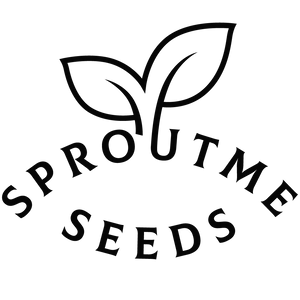Thyme is a versatile herb renowned for its aromatic foliage and culinary uses. It adds depth of flavor to various dishes and is also valued for its medicinal properties and ornamental appeal.
Preparing for Growing:
- Selecting a planting location: Choose a sunny location with well-drained soil.
- Soil preparation: Amend the soil with organic matter to improve drainage and fertility.
- Purchasing or preparing containers/pots: If growing in containers, ensure they have drainage holes.
Starting from Seeds Indoors:
- Seed preparation: Thyme seeds do not require special treatment before sowing.
- Choosing suitable pots/containers: Use small pots filled with seed-starting mix.
- Sowing and caring for seeds indoors: Sow seeds thinly on the soil surface, cover lightly with soil, and maintain consistent moisture until germination.
- Transplanting to larger containers if necessary: Transplant seedlings to larger containers once they have developed several sets of true leaves.
Starting from Seeds Outdoors:
- Soil preparation: Prepare a seedbed with well-draining soil and remove any weeds or debris.
- Selecting appropriate timing and method for outdoor sowing: Sow seeds outdoors after the last frost date in the spring.
- Caring for seeds outdoors: Keep the soil consistently moist until seeds germinate, which typically takes 14-21 days.
Growing in Containers/Pots:
- Selecting suitable plants for containers: Choose compact thyme varieties suitable for container growth.
- Container and soil preparation: Use containers with good drainage and fill them with well-draining potting mix.
- Sowing or transplanting plants into containers: Sow seeds or transplant seedlings into containers, ensuring they are planted at the same depth as they were in their original containers.
- Caring for container plants: Place containers in a sunny location, water when the top inch of soil feels dry, and fertilize with a balanced fertilizer every 4-6 weeks during the growing season.
Transplanting to Garden:
- Soil and planting site preparation: Choose a location with well-draining soil and full sun.
- Correct timing and method for transplanting: Transplant seedlings outdoors after the last frost date, spacing them 8-12 inches apart.
- Post-transplant care: Water newly transplanted seedlings deeply and provide shade for a few days to help them acclimate to outdoor conditions.
Plant Care:
- Watering: Thyme prefers slightly dry conditions and is drought-tolerant once established. Water deeply but infrequently, allowing the soil to dry out between waterings.
- Fertilizing: Apply a balanced fertilizer every 4-6 weeks during the growing season to promote healthy growth.
- Weeding: Keep the area around thyme plants free of weeds to reduce competition for nutrients and water.
- Pest and disease management: Thyme is relatively pest and disease-resistant but may occasionally suffer from issues like aphids or powdery mildew. Monitor plants regularly and treat any problems promptly.
Harvesting:
- Determining when plants are ready for harvest: Harvest thyme leaves as needed once the plants are well-established.
- Harvesting and storage guidelines: Cut stems as needed, using sharp pruning shears. Fresh thyme can be used immediately or dried for later use. Store dried thyme in airtight containers away from light and heat.
When to Start from Seeds by USDA Plant Hardiness Zones:
- Start thyme seeds indoors 6-8 weeks before the last frost date in your area or sow them outdoors after the danger of frost has passed.
Fast Facts:
- Planting depth: Sow seeds 1/4 inch deep.
- Seed spacing: Thin seedlings to 8-12 inches apart.
- Plant spacing: Space plants 8-12 inches apart.
- Number of seeds per pot/container: Sow several seeds per container and thin to the strongest seedling.
- Water preferences: Thyme prefers slightly dry conditions and well-draining soil.
- Sun preferences: Full sun.
- Soil type and other important factors: Well-draining soil with a pH of 6.0 to 8.0.
- Companion Planting: Plant thyme near cabbage, tomatoes, or eggplant to improve growth and flavor.
- Temperature Preference: Thyme prefers warm temperatures and is sensitive to frost.
- Days to Germination: Thyme seeds typically germinate in 14-21 days.
- Days to Harvest: Harvest thyme leaves as needed once the plants are well-established.








